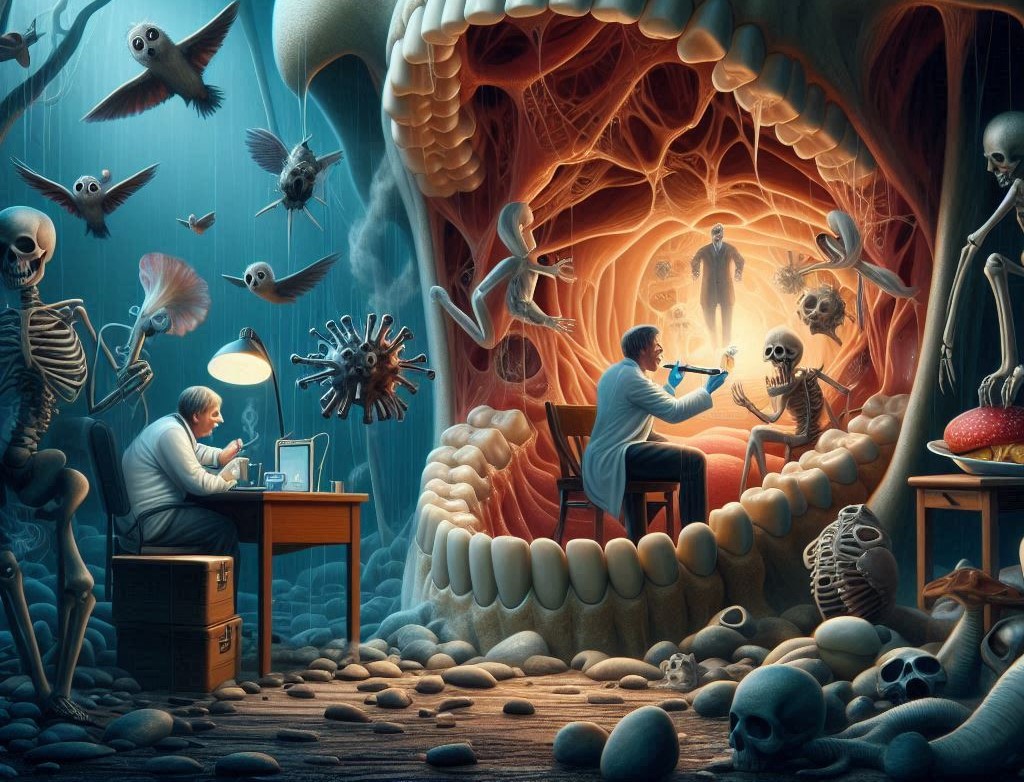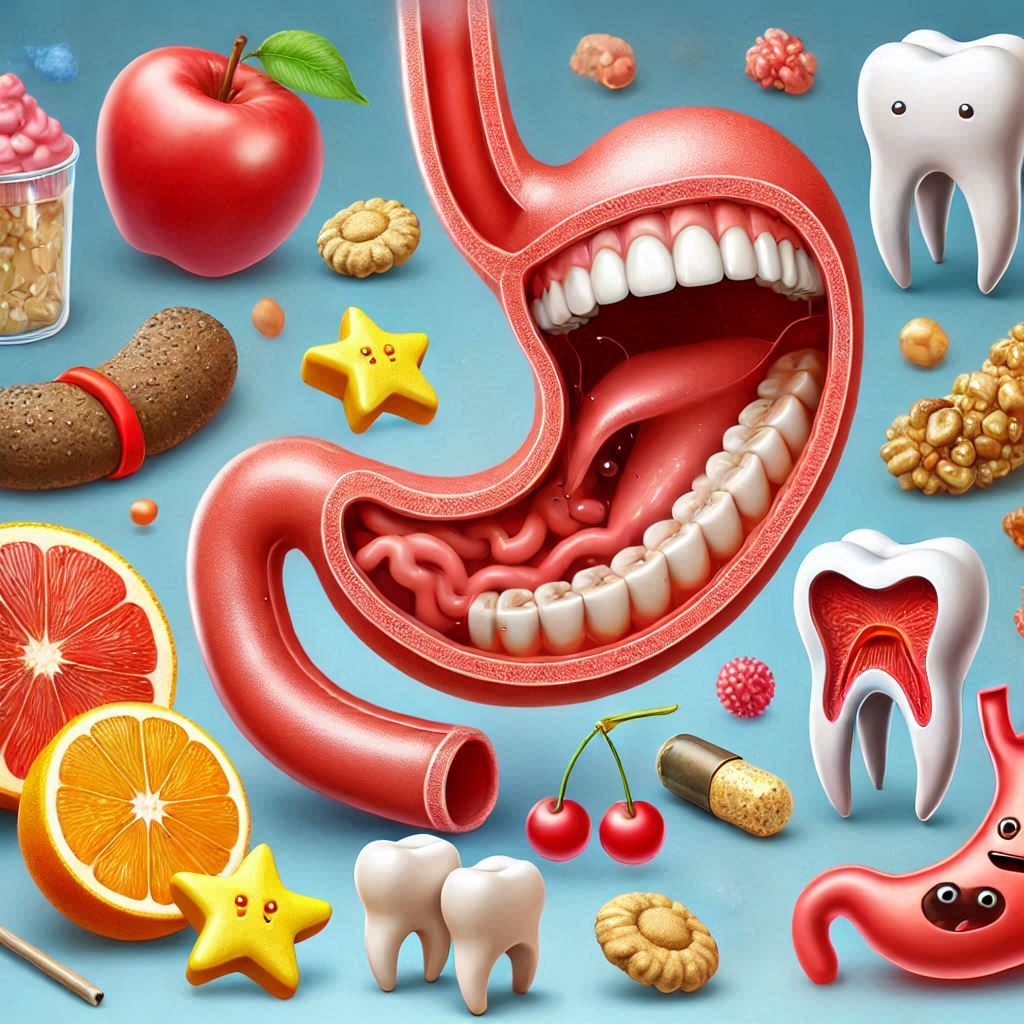Your oral health is a crucial part of your overall well-being, and being proactive in identifying dental issues can save you from pain, expensive procedures, and long-term damage. One of the most common dental treatments is the dental filling, used to treat cavities or damaged teeth. While regular checkups with your dentist are the best way to prevent and catch any issues early, being able to identify signs of needing a filling at home is equally important.
In this detailed guide, we’ll explore the various symptoms and signs that indicate you might need a dental filling. We’ll dive into why they occur, what to look out for, and how you can prevent such issues from getting worse. By understanding these signs, you’ll be able to catch potential problems early and take action before they progress into more serious and expensive dental issues.
Tooth Sensitivity: A Warning Sign
Tooth sensitivity is one of the first and most common signs that you may need a dental filling. People who experience heightened sensitivity to hot, cold, sweet, or acidic foods may find that their teeth are trying to signal that something is wrong. The sensitivity happens when the inner part of the tooth, called the dentin, becomes exposed or irritated due to weakened enamel or decay.
What Causes Tooth Sensitivity?
Tooth sensitivity typically occurs when the enamel, which is the hard outer layer of your tooth, wears away, exposing the underlying dentin. The dentin is softer and contains microscopic tubules that lead directly to the nerves inside your teeth. When exposed to hot, cold, or sweet substances, these nerves can become irritated, causing discomfort or pain.
What to Watch For:
- Pain or discomfort when drinking cold beverages (like water or iced drinks).
- Sensitivity to hot beverages (coffee, tea, soups).
- Discomfort when consuming sweets, particularly sugary foods, which can aggravate the exposed dentin.
- Sensitivity to acidic foods, such as citrus fruits or tomatoes, can cause immediate pain.
- Sensitivity when brushing your teeth or flossing in specific areas of your mouth.
If you notice that your teeth are becoming increasingly sensitive to these triggers, you may want to consult your dentist. Sensitivity is often an early warning sign that your tooth’s protective enamel is thinning or that there is a developing cavity underneath the surface.
How Dental Fillings Help:
A dental filling can restore the tooth’s structure and seal the cavity. This can prevent further exposure of the sensitive dentin, alleviating pain and preventing the decay from spreading deeper into the tooth.
Visible Holes or Pits: Direct Signs of Cavities
Sometimes, the best way to tell you need a filling is through visible inspection. If you notice small holes or pits on the surface of your teeth, that’s a clear sign that a cavity has formed and the tooth’s structure is compromised. Cavities are caused by the buildup of plaque and bacteria that erode the enamel over time.
What Causes Cavities to Form?
Cavities occur when bacteria in your mouth feed on sugars from the food you eat, producing acids that attack your tooth enamel. Over time, this acid weakens the enamel and forms a hole or pit in the tooth. If left untreated, cavities can grow deeper and affect the underlying dentin and pulp, leading to pain and infection.
What to Watch For:
- Dark spots or stains on your teeth that are not caused by food or drinks.
- Visible holes or indentations that you can feel with your tongue or see in the mirror.
- Discoloration that is brown, black, or gray in certain areas of your teeth.
- A rough or uneven surface on the tooth when you touch it with your tongue.
How Dental Fillings Help:
A dental filling can be placed in the cavity to restore the tooth’s natural shape and structure. It essentially fills the hole, preventing further decay and protecting the tooth from exposure to bacteria and food particles.
Persistent Tooth Pain: When Your Tooth Is Crying for Help
Tooth pain is one of the most obvious indicators that something’s wrong, and it often points to the need for a dental filling. The pain may begin as a dull ache and intensify as the cavity progresses deeper into the tooth. When the tooth is damaged by decay, it can become more sensitive to temperature changes, pressure, and even air exposure.
What Causes Tooth Pain?
Tooth pain typically occurs when a cavity or crack in the tooth exposes the soft tissue inside the tooth, called the pulp. The pulp contains nerves, blood vessels, and connective tissue, and any irritation or infection in this area can lead to pain. As the cavity progresses, the pain becomes more frequent and intense.
What to Watch For:
- Throbbing pain that seems to come from deep inside the tooth.
- Pain that worsens when chewing or biting, which indicates that the cavity may be affecting the tooth’s structure.
- Pain that lasts for several hours and doesn’t go away on its own, especially if it’s concentrated in a specific tooth.
- Pain triggered by certain foods, like sugary, hot, or cold foods.
How Dental Fillings Help:
A dental filling seals the cavity and removes the decayed part of the tooth. By filling in the hole, a dentist can relieve the pain associated with exposed nerves and prevent the spread of infection that could cause more severe pain or complications like abscesses.
Pain or Discomfort When Chewing: Pressure Points on a Weak Tooth
Pain when chewing or biting down can indicate that the structure of your tooth is compromised due to decay or damage. This type of discomfort typically occurs when the cavity or crack has weakened the tooth, causing it to become more sensitive to pressure. Even everyday tasks like chewing can aggravate the pain.
What Causes Pain When Chewing?
When decay affects the inner layers of the tooth, the tooth’s structure becomes less stable. Biting down on food puts pressure on the weakened area, which can cause irritation, pain, and further damage. A crack or hole in the tooth can also make the tooth more prone to breaking under pressure.
What to Watch For:
- Pain that occurs when you bite down on food, especially when biting into hard foods like nuts or ice.
- Pain in a specific tooth that worsens when you apply pressure, even lightly.
- A sudden or sharp pain when chewing that doesn’t subside quickly.
- Tooth that feels loose or unstable when chewing.
How Dental Fillings Help:
A filling can restore the tooth’s structure and strength, making it more resilient to pressure when chewing. It also prevents further damage from occurring, allowing the tooth to function normally without causing pain.
Bad Breath (Halitosis): A Sign of Underlying Decay
Chronic bad breath, or halitosis, can sometimes be a sign of tooth decay, especially when it’s caused by bacterial buildup in cavities. When a cavity forms, food particles and bacteria get trapped in the decayed area, where they start to break down, releasing foul-smelling compounds.
What Causes Bad Breath from Cavities?
As cavities develop, the bacteria in your mouth feed on the decayed tissue and create sulfur compounds, which are responsible for the bad odor. If the cavity is deep or untreated, this odor can become persistent and unpleasant.
What to Watch For:
- Persistent bad breath that doesn’t go away with regular brushing or mouthwash.
- A sour or metallic taste in your mouth that lingers, especially after eating.
- Bad breath that gets worse over time and is concentrated in one area of your mouth.
- Visible cavities or decay that correspond with the bad odor.
How Dental Fillings Help:
By filling the cavity, a dentist can eliminate the bacteria and food particles trapped in the decayed tooth. This helps to remove the source of bad breath and restore normal function to the tooth.
Visible Cracks or Chips: When Your Tooth Needs Restoration
Cracks and chips in your teeth are a common cause for concern, especially if they extend into the enamel or beyond. Even small cracks can become problematic if not addressed, as they can allow bacteria to enter and cause decay or infection inside the tooth.
What Causes Cracks and Chips?
Cracks can develop over time due to factors like tooth grinding, trauma, or biting down on hard foods. Chips often occur from trauma, such as accidents or accidents during activities like eating hard candies, ice, or sports.
What to Watch For:
- Small cracks or chips that are visible on the surface of the tooth.
- Discomfort when chewing or biting down on the cracked or chipped tooth.
- A jagged or uneven surface when you touch the tooth with your tongue.
- A piece of the tooth missing or a visible break in the enamel.
How Dental Fillings Help:
A filling can restore the tooth’s shape and protect it from further damage. If the crack or chip is large enough, a more extensive treatment like a crown may be needed, but a dental filling can often restore the tooth to its natural form.
Gum Recession: Exposing the Roots
Gum recession occurs when the gum tissue surrounding your teeth pulls back, exposing the roots of the teeth. When this happens, it can lead to sensitivity and an increased risk of tooth decay, especially around the gum line.
What Causes Gum Recession?
Gum recession is often caused by factors like periodontal disease, aggressive brushing, or aging. It can also occur due to the presence of cavities or decay near the gum line, where the gums are more likely to recede.
What to Watch For:
- The appearance of longer teeth, as the gums pull back from the base of the teeth.
- Increased sensitivity around the gum line, particularly to cold or acidic foods.
- Visible root surfaces of your teeth.
- Bleeding gums or inflammation when brushing.
How Dental Fillings Help:
A filling can help restore the structure of a decayed tooth near the gum line, protecting the exposed root surfaces and reducing sensitivity. In some cases, gum recession may require additional treatments like gum grafts or professional cleanings.
Discoloration or Darkening of the Tooth: A Red Flag
If you notice a tooth darkening or becoming discolored, especially when it’s not related to food or drink, it could indicate that decay is taking place inside the tooth. Teeth that darken or become stained due to cavities or infection typically do not improve with regular cleaning.
What Causes Tooth Discoloration?
Tooth discoloration happens when decay or damage affects the enamel, causing it to appear darker or stained. The outer enamel layer may break down, allowing the darker dentin underneath to show through.
What to Watch For:
- Dark spots or blackened areas on your teeth that don’t come off with regular brushing.
- Teeth that appear gray or discolored, particularly in areas near previous dental work.
- Uneven discoloration, where only part of the tooth darkens.
How Dental Fillings Help:
By restoring the decayed part of the tooth with a filling, the discoloration is corrected, and the tooth regains its normal appearance. Fillings can be made from materials that match the natural color of your teeth, improving aesthetics.
Regular Dental Checkups: The Best Preventative Measure
The most effective way to identify dental issues like cavities early is by maintaining regular checkups with your dentist. Professional cleanings and X-rays allow your dentist to catch issues that might not be visible or symptomatic yet.
What to Watch For:
- Regular dental exams every six months or as recommended by your dentist.
- Routine X-rays that can detect cavities before they become visible.
- Prompt treatment when small cavities or issues are detected.
How Dental Fillings Help:
Early intervention through fillings can prevent more extensive treatments like root canals or crowns, saving you money and preserving your teeth.
Conclusion
Knowing when you need a dental filling is essential for maintaining long-term oral health. Symptoms like sensitivity, visible holes, pain, and cracks can all be signs that a filling is needed. The earlier you catch these problems, the easier and more affordable the treatment will be. If you experience any of these symptoms, schedule a visit with your dentist as soon as possible.
By staying proactive with your dental care and recognizing the signs of tooth decay or damage, you’ll ensure that your teeth stay healthy and functional for many years to come.
SOURCES
Bergenholtz, G. (2010). Pathogenesis of apical periodontitis and the causes of endodontic failure. Journal of Endodontics, 36(3), 100-107.
Burt, B. A. (2008). The influence of topical fluoride on the prevention of dental caries in the permanent dentition. Journal of Dental Research, 87(7), 528-533.
Chapple, I. L. C., Mavropoulos, A. (2009). Periodontal disease and systemic health: From the basics to the advanced. Dental Clinics of North America, 53(4), 603-617.
Cochran, D. L., Weyant, R. J., & Cohen, R. E. (2010). Diagnosis and management of dental caries: A guide to the prevention of tooth decay and the latest treatment options. Dental Clinics of North America, 54(3), 459-472.
Dawes, C. (2011). What is the role of saliva in maintaining oral health? Australian Dental Journal, 56(4), 404-409.
Featherstone, J. D. B. (2004). The science and practice of caries prevention. Journal of the California Dental Association, 32(9), 723-732.
Graham, L. D., Krop, L. M., & Stein, B. A. (2014). Diagnosis and management of tooth hypersensitivity. Australian Dental Journal, 59(1), 4-11.
Lynch, C. D., McConnell, R. J., & Fowler, C. (2016). Dental caries and restorative materials: The role of dental fillings. British Dental Journal, 221(12), 787-795.
Murray, J. J. (2003). A review of the management of dental caries. British Dental Journal, 194(6), 325-332.
Robinson, C. (2009). The effects of fluoride on the development and progression of dental caries. The Journal of Clinical Dentistry, 20(2), 69-76.
Stuart, A. M., Patterson, D. M., & Troup, A. S. (2012). A comprehensive guide to treating dental hypersensitivity. The Journal of the American Dental Association, 143(6), 631-638.
Taubman, M. A., Smith, D. J., & Lamont, R. J. (2005). Caries and periodontal disease: Shared risk factors and prevention. Journal of Clinical Periodontology, 32(4), 314-321.
Watt, R. G., & Moynihan, P. J. (2007). Dietary sugars and dental caries: A review of the evidence. Community Dentistry and Oral Epidemiology, 35(4), 217-232.
HISTORY
Current Version
February 24, 2025
Written By:
SUMMIYAH MAHMOOD




